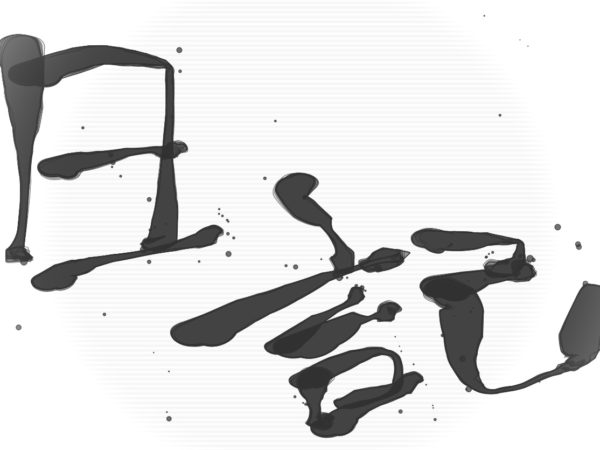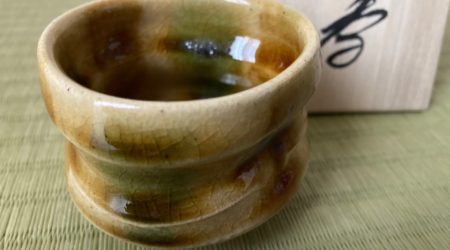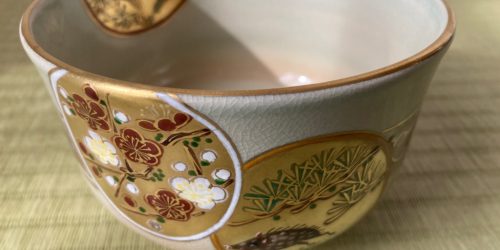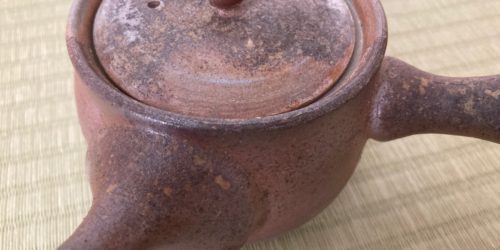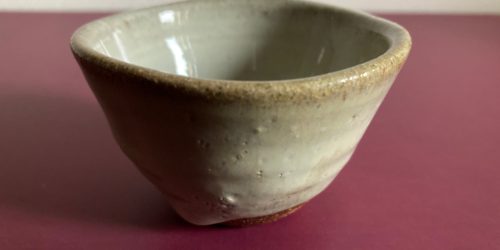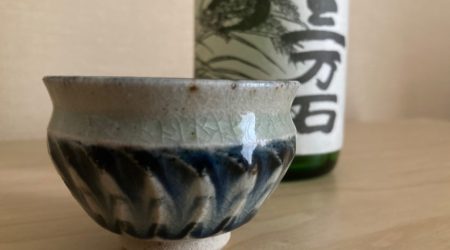A Japanese pottery design called, “Kizeto” goes with any cuisine, and it is very versatile
I am always writing about Japanese foods these days.
Actually I always think about what I should eat.
I may be a greedy eater, but I hate to admit it.
So I’ll write about other topics.
This is a photo of my Japanese pottery.
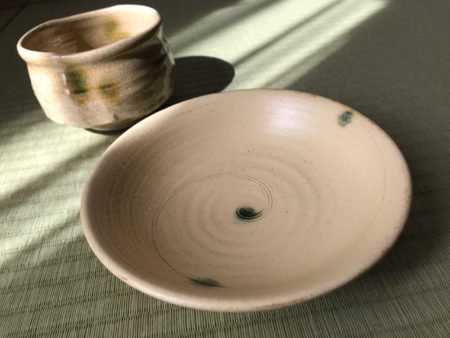
There is a bowl and a tea bowl called, “Kizeto”.
This time, I will write about the charm of Kizeto.
Kizeto is one of the names of a particular Japanese pottery design.
Typical Kizeto is characterized by a yellow glaze, and some drops of green glaze called, “Tanpan” are scattered on this yellow glaze.
By the way, Kizeto is also called, Kiseto.
I think that Kizeto has a really profound design.
Kizeto pottery really has a Japanese sense, and it shows off Japanese cuisine.
On the other hand, Kizeto pottery and Western-style foods also go well together.
So I think that Kizeto is an all-around design.
I will explain that more concretely using my Kizeto bowl as an example.
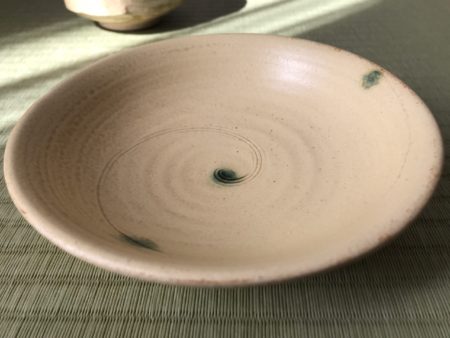
That rustic design is a good match for Japanese stews, such as Nikujaga.
On the other hand, I serve some bread in that bowl. Then, the bowl has a completely different look.
The bowl looks like Western pottery because of some bread.
That’s why I think that Kizeto is an all-around design.
Kizeto pottery has a long history as it has been made for 1,000 years.
In particular, antique Kizeto pottery is really tasteful.
Antique Kizeto pottery does not have a shiny surface.
Its surface looks like, “Abura-age” (deep-fried tofu), and it is so tasteful.
Today, many potters have tried to create pottery that is true to that texture, but it seems very difficult technically.
That kind of pottery is usually very expensive.
But there is a lot of beautiful Kizeto pottery that is reasonably priced for the average citizen like me.
Kizeto goes with any cuisine, and it is very versatile. So it’s good to have it.
